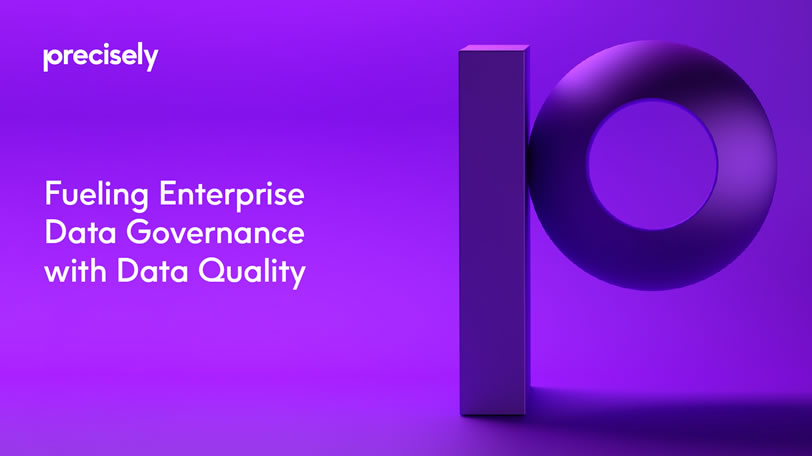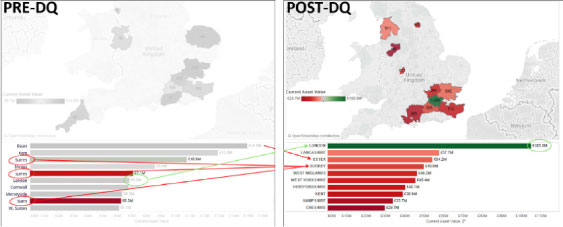eBook
Fueling Enterprise Data Governance with Data Quality
In this eBook, we’ll discuss how data quality is strengthening the overall enterprise data governance framework.
Data: The fuel of the future
“Data is to this century, what oil was to the last one: a driver of growth and change. Flows of data have created new infrastructures, new businesses, new monopolies, new politics and crucially new economics.
Digital information is unlike any previous resource: it is extracted, refined, valued, bought and sold in different ways. It changes the rules for markets and it demands new approaches from regulators.
Many a battle will be fought over who should own, and benefit from, data.”
– The Economist: Fuel of the future – Data is giving rise to a new economy: 6th May 2017
We live in a world of increasing data. It’s a driver of growth and change and it’s changing how we’re approaching business. As a result, it is changing how we need to manage and govern our data.


The evolving role of data governance
Data Governance practices can help us drive business advantage from improved customer experience to better supplier relations – leading to more sales and lower costs. New regulations are making data governance a must-have, not a nice-to-have. But data governance doesn’t come without its challenges. Not only is the volume and complexity of data growing, but it’s also not just structured information anymore: it’s unstructured information, it’s sensor data, it’s all the different feeds coming in from our mobile phones or Twitter devices or social media activity.
We’re operating in a world where our expectations about what data can do is growing while at the same time trust and confidence in data is declining.
Data quality and data governance have a symbiotic relationship
We all use information to gain intelligence and insight but it’s only useful if the data is accurate! Data impacts all parts of the business from sales and marketing (reporting, segmentation, performance, territory management, etc.) to operations (workloads and scheduling, logistics, financial analysis and forecasting) to legal and compliance (regulatory compliance, risk mitigation).
Data governance needs appropriate data quality processes and tools to not only clean the raw data, but to illustrate data errors, peculiarities and issues, in order to help compile the best standards, establish key metrics, and monitor the data quality over time.
Data quality needs appropriate data governance processes and practices to ensure the data is cleaned and maintained within an appropriate data framework which is relevant and pertinent to the business needs and users.

Changes in data quality can undermine trust
What you don’t know CAN hurt you. Measuring and monitoring the ongoing quality of your data is critical to successful data governance.
Beyond traditional dimensions of data quality, we now need to consider an array of new concerns brought on by an increasing variety of data such as:
- Signal loss
- Noise
- Differing aggregations
- Invalid correlations
- Unexpressed assumptions
- Incorrect defaults
- Lack of context
- Missing inputs
Here’s an example in action: a simple dashboard showing sales by region for parts of the UK. Looking at the first chart (before data quality measures are applied), you might be led to the assumption that certain counties should be your focal point, whether for marketing or customer assessment. But by improving data quality, you actually find that London is by far the prominent focal point along with immediate surrounding counties. Without appropriate application of data quality, you’d be making the wrong decisions for your business.

It’s more than simply ‘understanding’ your data
Understanding your data quality is central to supporting data governance initiatives. More than just “understanding” your data, you need to establish a process for measuring your data in a repeatable way and communicating those findings out to business leaders and your organization as a whole. This will help create insight into current costs and impacts that your data governance efforts can address, and downstream establish greater trust in the data.
Here’s a checklist of how to establish a method for measuring and reporting on data quality:
- Establish the key business objectives including outcomes and metrics that can be addressed
- Establish the requirements for the data, including data quality goals, relevance and fitness for purpose
- Capture the metadata for data sources being considered and used
- Profile the data sources which are required for the desired analysis
- Evaluate the data sources for the identified and required qualities of the data
- Document and store the findings about data sources and processes
- Provide and communicate findings about data sources and processes for other to utilize in the context of the business objectives
- Implement processes for continued improvement, tracked by ongoing metrics
How to get data quality and enterprise data governance moving in your organization
By understanding the symbiotic relationship between data quality and data governance, we can inform our business practices more effectively. But how do we begin to look at it from an execution strategy perspective? Sometimes you don’t know what your data challenges are or it’s difficult to move big projects forward at your organization, but in any case, these steps will help you get started.

1. Start small: Whether you want to increase revenue or minimize risk, you need to zero in on a business objective that needs to be investigated. Demonstrating results and getting executive buy-in is critical in the early stages of implementation.
- Identify business objectives
- Secure executive sponsorship
- Initiate small projects
- Evaluate project results
2. Collaborate: Collaborating is essential to establish the keys that will allow you to come to a common understanding on what you’re trying to address and drive overall business value.
- Establish a common language
- Gain broader buy-in
- Enrich information
- Share insights regularly
3. Quantify: It’s critical to be able to consistently finish these initiatives, drive value, capture metrics and tie it into the overall process framework that you’re putting in place from a data governance perspective. Over time, it becomes an ongoing information channel that everyone can begin to participate in.
- Identify baseline measures
- Link to business performance
- Monitor, report and remediate issues
- Quantify the impact of changes
- Continuously iterate the process
Summary
The accuracy of data directly impacts any activity downstream – from analytics, reporting & dashboards, segmentation & targeting, customer care through to risk & compliance… in fact ANY business decision!
Data quality not only strengthens data governance compliance; it also means you make better business decisions.
